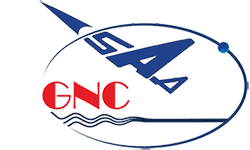Call for Papers
Special Issue on Autonomous Navigation and Control Technologies for UAVs
Topic Summary:
Autonomous navigation and control technologies for UAVs have become increasingly important due to their potential applications in various fields such as surveillance, delivery services, and disaster management. UAVs function independently not like standard UAVs, which need human operators. It makes decision in real time based on information about their surroundings. The trend toward autonomous UAVs is powered by their capacity to perform tasks like package delivery on a large scale, reduce human risk in dangerous locations, function constantly without causing frustration to humans, and save manpower and operational costs. UAVs employ various techniques and tools such as sensors (e.g., GPS, cameras, LiDAR, and radar) for environment awareness. computer vision, SLAM, and path planning algorithms for obstacle avoidance, real-time data transmission and command reception through communication systems and onboard computing with high-performance processors for real-time decision making.
Recent trends in UAV technology include AI integration, where machine learning and deep learning methods improve understanding and decision making. Swarm intelligence, which makes it possible for multiple UAVs to collaborate over complex missions. Edge computing, which processes data onboard to minimize latency and increase responsiveness in real time and regulatory developments that are transforming to support UAV operations. Future UAVs are expected to have increased autonomy with less human oversight and better decision-making, advanced sensor fusion for better environmental awareness, urban air mobility (UAVs used for passenger transportation) and the development of safe, energy-efficient UAVs to promote sustainability.
Despite its potential, it has several challenges like mitigating collision risks and ensuring cybersecurity, adapting regulations for autonomous operations, and handling dynamic and unpredictable environments. To overcome these challenges, multiple sensor data are integrated for robust perception, need to develop frameworks for responsible AI use, and conducting rigorous testing in both simulated and real-world scenarios. However, the development of autonomous navigation and control technology is essential to realizing UAVs' full potential in a variety of industries. While it remains challenge, continuous developments in regulation and technology are paving the way for autonomous UAV operations which are safer, effective, and more competent. These technologies have the potential to completely transform sectors and improve our ability to solve difficult problems on an international level.
The range of topics includes, but is not limited to:
- Applications of UAVs in Surveillance, Delivery Services, and Disaster Management.
- Advancements of UAVs in Reducing Human Risk and Operational Costs.
- Role of SLAM and Path Planning Algorithms in UAV Navigation.
- Future Trends in UAV Technology and Regulation.
- Tools and Techniques for Real-Time Decision Making in UAVs.
- Enhancing Understanding and Decision Making by Integrating AI in UAVs.
- Employing Advanced Sensor Fusion for Enhanced Environmental Awareness in UAVs.
- Utilization of Edge Computing for Real-Time Data Processing in UAVs.
- Strategies to Overcome Challenges in UAV Operations.
- Analysis of Cybersecurity Measures for Securing Autonomous UAV Networks.
Important Dates:
- Submission Deadline: 30th June, 2025
- Author Notification: 10th April, 2025
- Revision and Resubmission Deadline: 31st May, 2025
- Paper Acceptance: 31st July, 2025
Submission Guidelines:
Prospective authors are invited to submit their manuscripts electronically, adhering to the guideline for authors of Guidance, Navigation and Control.
Please submit your papers through the online system
Before submitting your paper, be sure to select the special issue or special section name “Special Issue: Autonomous Navigation and Control Technologies for UAVs”.
All manuscripts should not be published or currently submitted for publication elsewhere. Please submit only full papers intended for review, not abstracts, to the online system of Guidance, Navigation and Control.
Guest Editor Details:
 |
Prof. Pawel Skruch Department of Automatic Control and Robotics, AGH University of Krakow, Poland Email: masterskpawel@gmail.com, skruch@agh.edu.pl |
 |
Prof. Saleh Mobayen Graduate School of Intelligent Data Science, National Yunlin University of Science and Technology, Douliou, Yunlin 640301, Taiwan Email: Email: mobayens@yuntech.edu.tw |
 |
Prof. Marek Galinski Institute of Computer Engineering and Applied Informatics, Slovak University of Technology in Bratislava, Bratislava, Slovakia. Email: Email: marek.galinski@stuba.sk |



